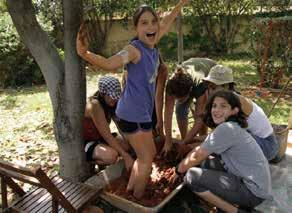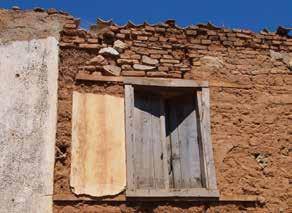
3 minute read
About Piliko
INTRODUCTION
During the spring of 2018 a series of international conferences and an exhibition of posters about contemporary architecture and project experiences with natural materials was held at the Center for Mediterranean Architecture in Chania, Crete. Architects from diverse countries, mainly European and Ibero-American, exhibited projects realized mainly in earth, wood and straw, integrating concepts of sustainable construction. Nothing more contemporary than this could be proposed in the global environmental situation: a renewed look at how to help build a better world, based on natural principles. This project’s philosophy is nothing new. Reflection on the impact of human action on nature has roots as deep as Eastern Taoism and expressions in modern architecture such as Wrightian organicism or the metabolism of the Japanese architect K. Kurokawa. The new generations of architects are increasingly aware that their action determines the environmental problems of the future. It is estimated that around 40% of the world’s energy consumption comes from the construction sector. How not to be scandalized when we witness a festival of high-end technological architectural works that leave a fatal footprint of greenhouse gases on the planet in their production? The British scientist J.Lovelock raised in the ‘70s in his thesis Gaia (the Greek Mother Earth goddess), the idea that our planet could be likened to a cell. It is susceptible to external processes and actions that alter ecosystems, but it has a capacity to be restored by a principle of resilience. The question is, what is the limit of the point of no return? Our first professional ethical duty is to safeguard life in our ‘big house’ by contributing with new solutions.
Advertisement
To resolve this question we were invited to participate in this cultural activity: an exchange of experiences, principles and solutions with those who think in a similar way. There were both important recent architectural experiences and some more long-standing ones. All of them undoubtedly build a collection that must be valued and considered in its true contribution and dimension. We must integrate this new way of building into modern ways of living. It is necessary to reformulate the seismic-resistant, acoustic and hygro-thermal behaviors based on scientific progress, as well as the treatment of waste under the criterion of a circular economy. We must apprehend these projects coming from a large part of the world, those that have developed in different cultural, geographical, climatic and human contexts. This is the final value of this meeting of two worlds. I congratulate the Greek organization PILIKO, instigator and manager of the idea, for such a laudable purpose and all the institutions that have supported it, with the hope of repeating it on a new frontier with new and better experiences.
HUGO PEREIRA GIGOGNE
ARCHITECT
June 2019
ABOUT PILIKO
“Piliko” was created in summer 2008 by professionals who specialize in the field of construction and who share a common interest in building with natural materials and sustainable architecture. Since 2011 “Piliko” has been a non-profit organisation with the aims to: • Promote environmental awareness in the domain of sustainable design and construction; • Document vernacular construction techniques and assess their contemporary relevance; • Research new methods of building with natural materials and convey this knowledge. Driven by these aims the group is involved in and organises the following activities: • Informative and educational lectures and exhibitions open to the wider public. • Hands-on construction workshops in collaboration with experts open to students and professionals. • Workshops open to children. • Documentation and archiving of the Greek earthen architectural heritage. • Coordination and participation in research projects. • Counselling on scientific and legislative issues related to construction with natural materials. • Coordination and participation in international networks for information exchange.





